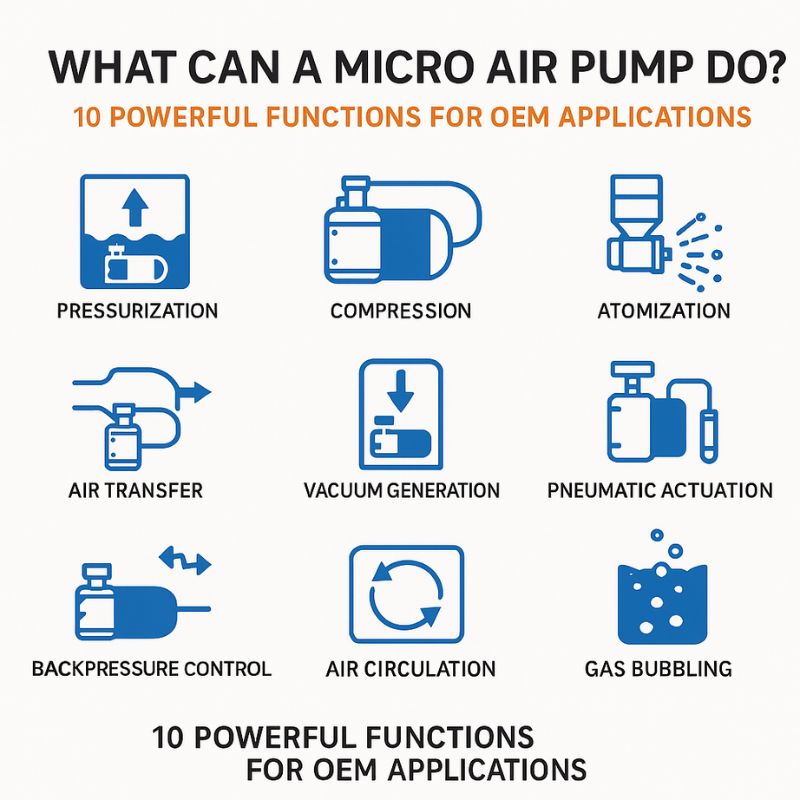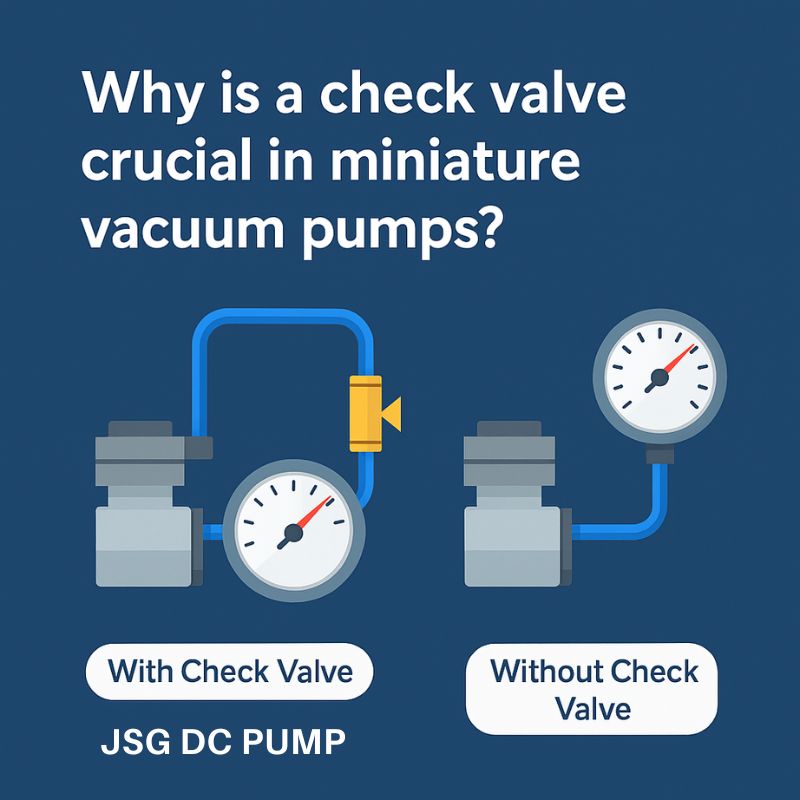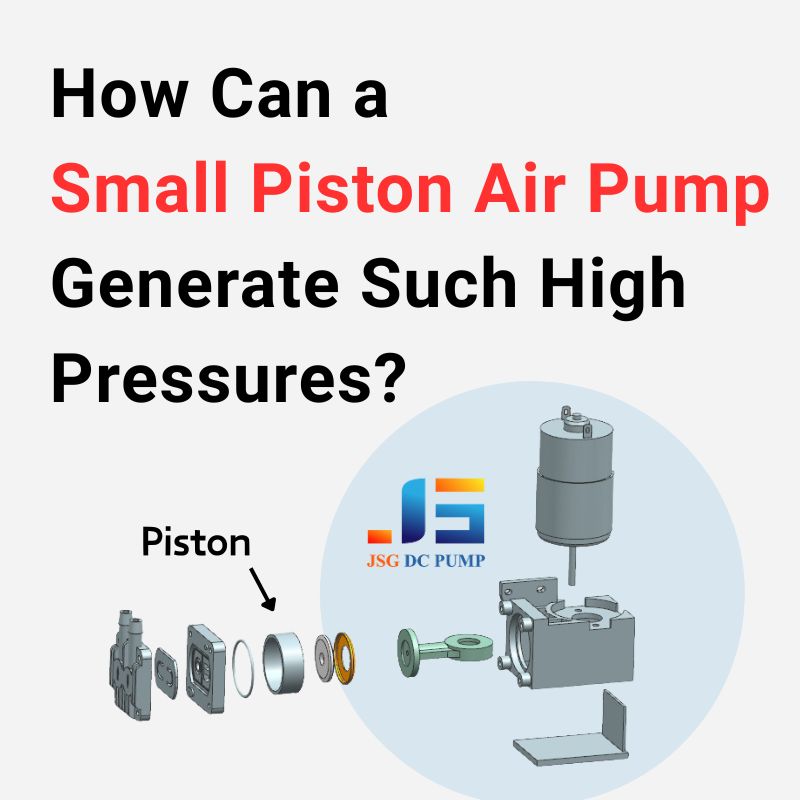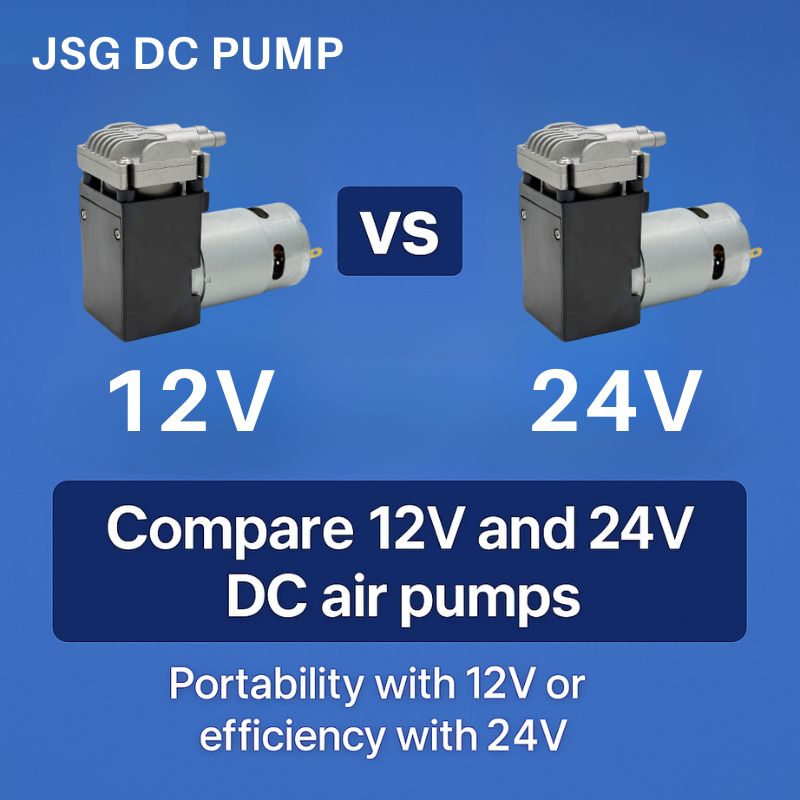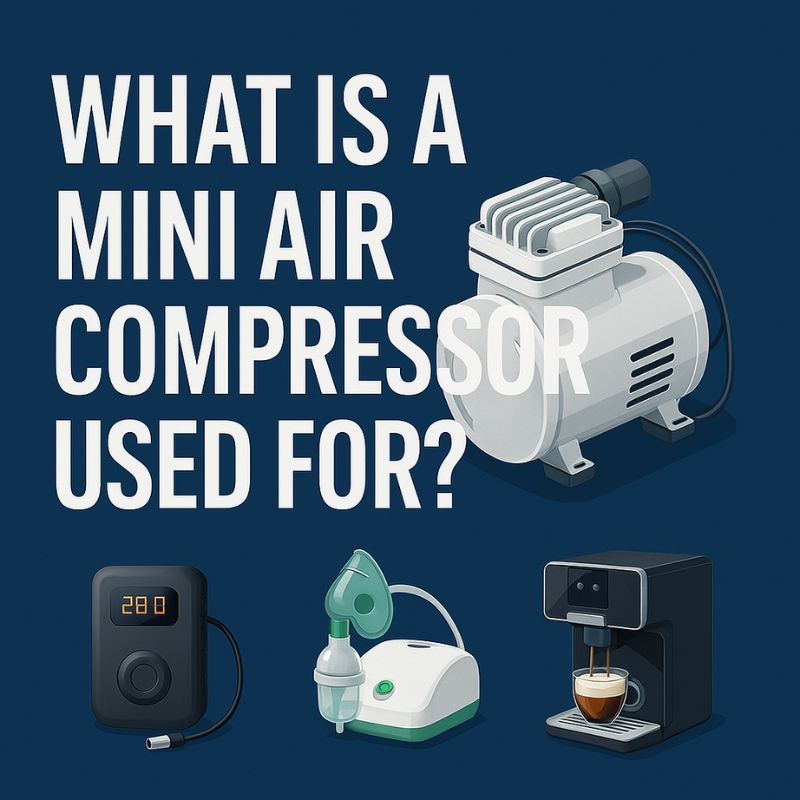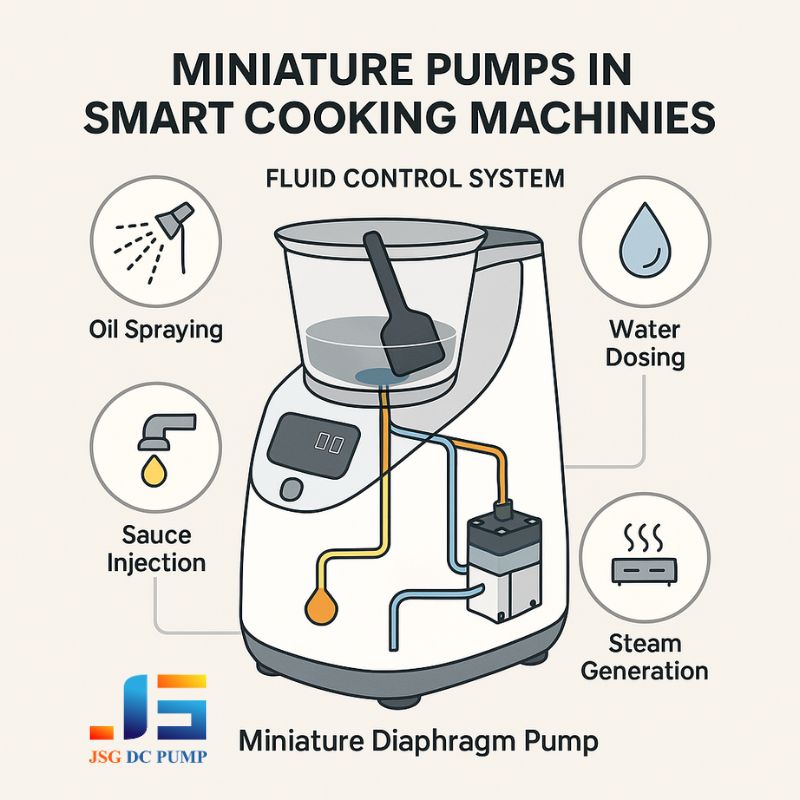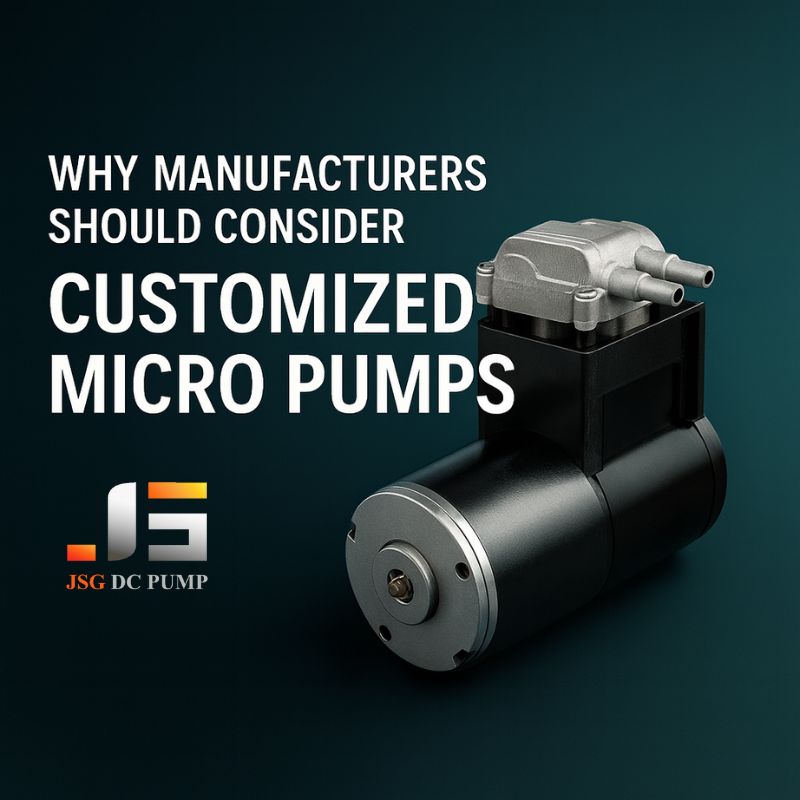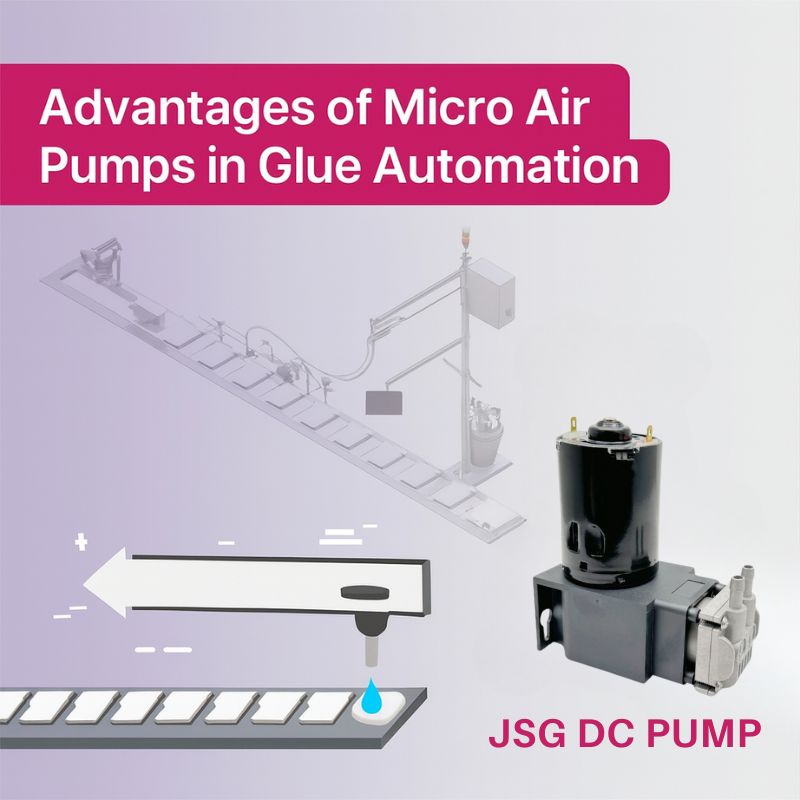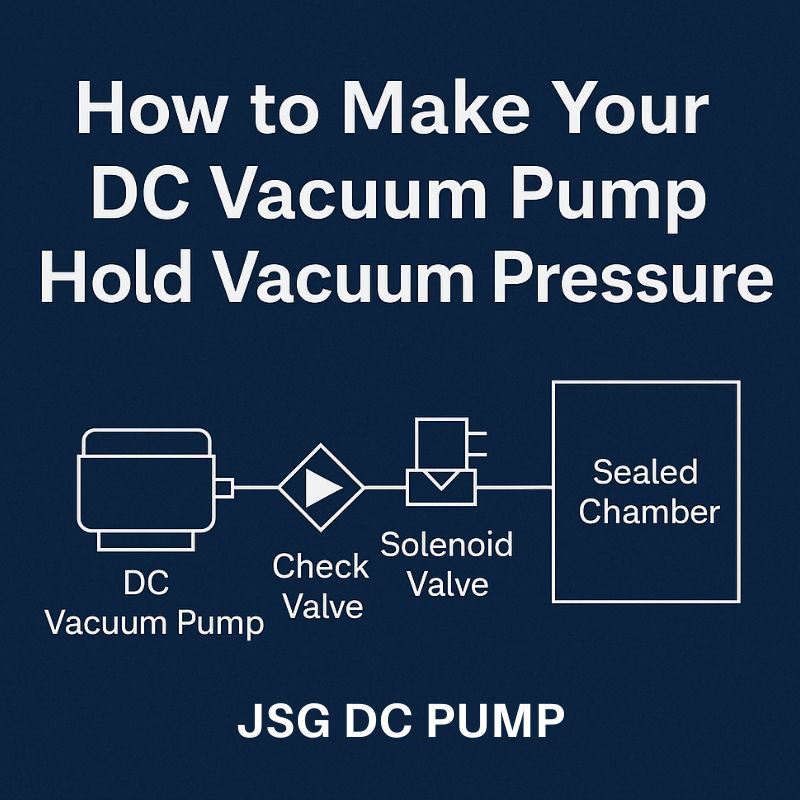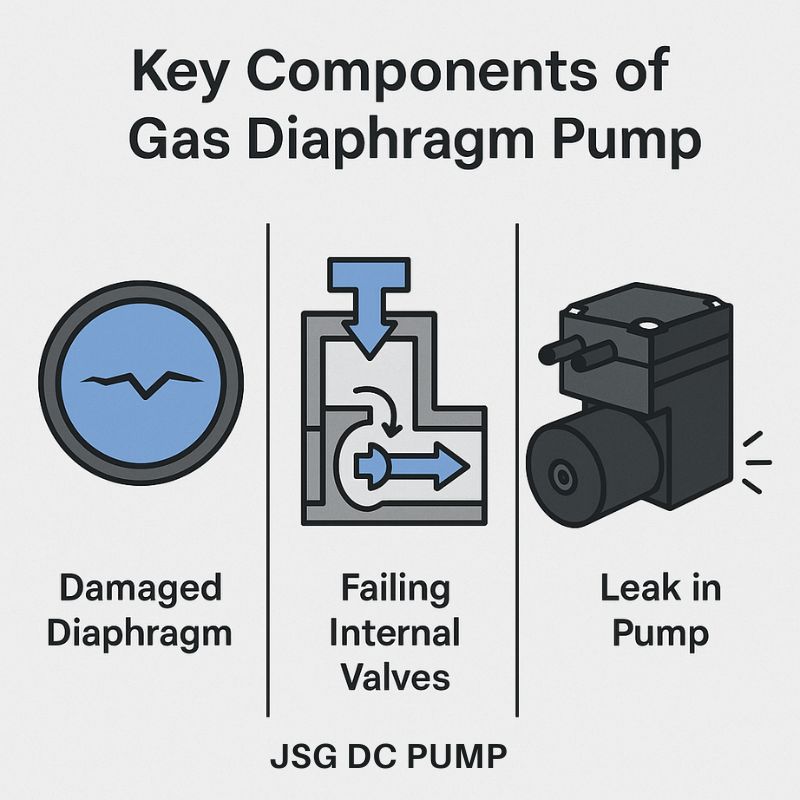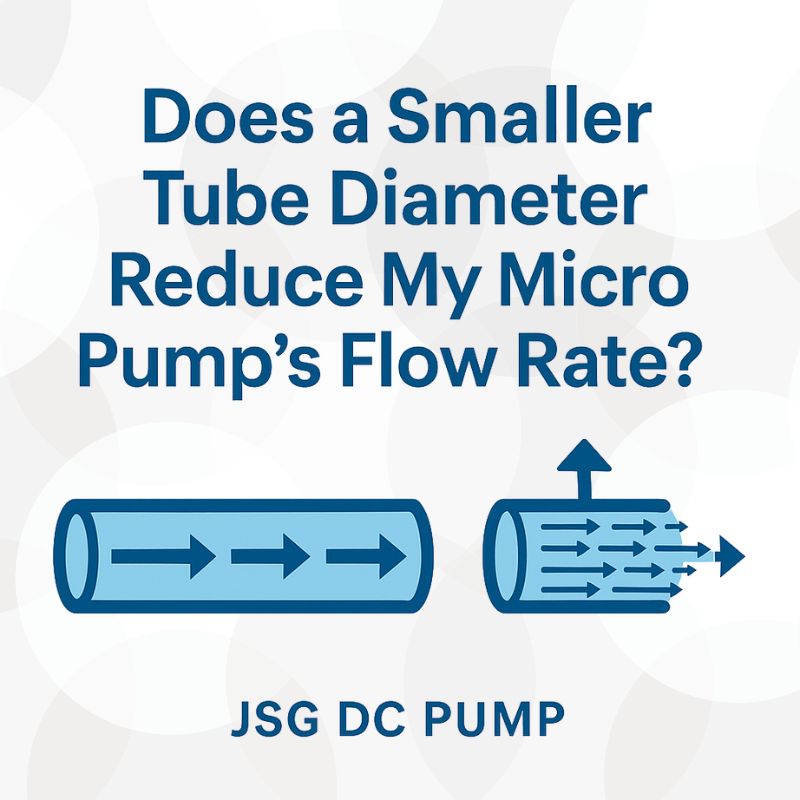Your product design is 90% complete, but you need a way to move air, create pressure, or generate a vacuum in a tiny space. You’re stuck, unsure how to add this function without a bulky, power-hungry solution.
A micro air pump is a versatile component that performs up to 10 key functions for OEM applications, including pressurization, compression, air transfer, atomization assistance, circulation, vacuum generation, pneumatic actuation, backpressure control, targeted cooling, and gas bubbling for mixing.

Over my 22 years in the industry, I’ve seen micro air pumps evolve from niche components into essential building blocks for countless innovative products. Engineers often come to us at JSG with a specific problem, like needing to inflate a medical cuff, and are amazed to learn about the sheer range of functions these pumps can perform. They aren’t just for blowing air; they are sophisticated tools for enabling complex processes. Let’s explore the 10 powerful functions that our micro pumps bring to OEM applications.
How Can a Mini Air Pump Provide Precise Pressurization?
You’re developing a medical device that requires exact pressure control. Too little pressure and it’s ineffective; too much and it could be unsafe. Finding a compact solution you can trust is critical.
A mini air pump, paired with a sensor and controller, creates a responsive closed-loop system. It can precisely pressurize a sealed volume, like a blood pressure cuff or therapy device, by adding air until the sensor reaches the exact target pressure.

This is one of the most common and critical applications I work on. The key to precision isn’t just the pump, but how it’s integrated into a system. For a client’s portable blood pressure monitor, we didn’t just supply a pump; we helped them select a coreless motor that could be easily controlled via PWM (Pulse Width Modulation).
This control allows their circuit board to run the pump at full speed for rapid inflation and then pulse it with tiny bursts of air to “top off” the pressure to the exact setpoint, for instance, 180 mmHg. The pump provides the force, but the system’s electronics provide the intelligence.
Key Components for a Precision Pressurization System:
- The Mini Air Pump: Provides the source of airflow.
- A Pressure Sensor: Measures the pressure in real-time.
- An Electronic Controller (MCU): Reads the sensor and controls the pump’s motor.
- A Release Valve: To quickly and safely vent the pressure.
How Does a Mini Compressor Pump Perform Air Compression?
You need a stream of high-pressure air to power a tool or an atomizer, but traditional compressors are far too large and loud. You are looking for a miniature, integrated solution.
A mini compressor pump, especially a piston model, acts as a miniature air compressor. It continuously forces air into a high-pressure stream, which can be used immediately to drive a nozzle or can be stored in a small reservoir for later use.

While pressurization fills a container to a static pressure, compression creates a dynamic, usable flow of high-pressure air. This is where our high-pressure piston pumps excel. I worked with a company developing a handheld device for applying protective coatings to electronics. They needed a pump that could generate a steady 100 PSI (nearly 700 kPa) to ensure the coating was finely atomized.
We provided them with a compact piston pump that integrated directly into the handle of their device. This eliminated the need for a separate, tethered air compressor, making their product completely portable and self-contained. The pump’s ability to consistently deliver high-pressure air was the key to their product’s success.
How is a DC Air Pump Used for Air Transfer?
Your design requires moving a precise gas sample from a collection point to a sensor without it being contaminated. You need more than a fan; you need a sealed and controlled transfer system.
A DC air pump functions as a closed-loop transfer system. It draws air or gas from an inlet tube and pushes it out through an outlet tube, ensuring a clean, directed transfer for applications like environmental gas sampling or system ventilation.

When the primary goal is simply moving air from point A to point B through tubing, flow rate (L/min) and purity become key. Diaphragm pumps are often the best choice here because they offer an oil-free path, critical for applications like air quality monitoring.
A client developing a portable emissions analyzer needed to pull a gas sample from an exhaust pipe and deliver it to an internal sensor. We supplied them with a brushless DC diaphragm pump with a long lifespan and a chemically resistant FKM diaphragm. This ensured they could perform thousands of reliable tests in the field without the pump contaminating the sample or failing due to exposure to harsh gases.
| Feature | DC Air Pump (Diaphragm) | Standard Fan |
|---|---|---|
| Air Path | Sealed, directed via tubes | Open, undirected |
| Pressure | Creates positive pressure | Very low pressure |
| Contamination | Low (Oil-free designs) | High (Open to environment) |
| Best For | Gas sampling, sealed systems | General cooling, ventilation |
What is a Micro Pump’s Role in Atomization?
Your product needs to create a fine mist from a liquid, like an aroma diffuser or disinfectant sprayer. You need a way to break the liquid into aerosolized particles efficiently and consistently.
The micro pump provides a high-flow, high-velocity stream of air. When this air is forced through a venturi nozzle along with the liquid, the pressure drop and shear forces atomize the liquid into a fine, consistent mist.

In this function, the pump is the engine that provides the energy for a physical process. The pump itself never touches the liquid. It provides a powerful airflow that is channeled into a specially designed nozzle. As the air rushes past a small liquid feed, it creates a low-pressure zone (the Venturi effect) that siphons the liquid up. The sheer speed of the air then shatters the liquid into microscopic droplets.
We recently worked with a company making portable disinfectant sprayers. They needed a pump that could deliver a very specific flow rate to match their nozzle design for optimal droplet size. We customized one of our standard models to hit their exact performance target, ensuring their device was both effective and efficient.
Why is a Micro Air Pump Ideal for Air Circulation?
You have an analysis instrument or sensor chamber that needs a constant, gentle flow of clean air to prevent dust buildup or to ensure a stable baseline reading. A fan creates too much turbulence.
A micro air pump provides a steady, low-pressure, and continuous stream of air that can be circulated within a closed or semi-closed system. This is perfect for protecting sensitive components or ensuring sample consistency in analytical instruments.
For continuous circulation, reliability and lifespan are the most important factors. This is a perfect application for our long-life brushless micro air pumps. Because brushless motors have no parts that wear out from friction, they can run continuously for tens of thousands of hours.
I consulted with a team building a high-precision optical instrument. The sensor was so sensitive that even microscopic dust particles could affect its readings. We provided a very small, quiet brushless pump that ran 24/7. It drew air through a HEPA filter and gently circulated it within the sensor housing, creating a positive pressure micro-environment that kept all contaminants out. This drastically improved the instrument’s long-term reliability.
How Can an Air Pump Generate Negative Pressure?
Your design requires a component to be held firmly in place or a fluid sample to be drawn into a chamber. Mechanical clamps are too bulky, and you need a reliable suction force.
By using the air pump’s inlet port as the functional port, it becomes a vacuum pump. It evacuates air from a sealed volume, creating a negative pressure differential that generates a strong, reliable suction or clamping force.
It’s a simple change in perspective that unlocks a huge range of functions. When we engineer a pump for vacuum applications, we pay special attention to the sealing integrity. Any leak on the vacuum side will degrade performance.
For a lab automation client, we provided a pump that could generate a -80 kPa vacuum, allowing their robotic arm to securely handle delicate glass slides without any mechanical grippers. This offered several advantages:
- Saved Space: No bulky mechanical clamps.
- Reduced Risk: Gentle handling prevented breakage.
- Increased Speed: Faster pick-up and release cycles.
How can a Micro Air Pump Enable Pneumatic Actuation?
You need to create linear motion in your device—to push a button, open a valve, or move a small lever. A solenoid is too weak, and a motor with gears is too complex and large.
A micro air pump can power a pneumatic actuator, such as a small cylinder or an inflatable bladder. The pump pressurizes the actuator, causing it to expand and create a powerful linear force, effectively acting as a tiny, controllable muscle.
This is where pumps perform real mechanical work. I find this application exciting because it opens up possibilities in soft robotics and wearables. A client was developing a therapeutic massage mat. Instead of dozens of noisy vibrating motors, we helped them integrate a single, quiet JSG micro pump. It connected to a manifold that sequentially inflated and deflated a series of small air bladders.
This created a gentle, wave-like massage effect that was far more effective. The pump acts as the heart, and the air channels deliver force exactly where it’s needed. This method is often simpler, lighter, and more powerful than a purely electromechanical solution.
How Does a DC Air Pump Hold Backpressure?
Your automated dispensing system requires a constant pressure on the fluid to prevent dripping, but also needs to be stable. You need a way to maintain this precise backpressure reliably.
The DC air pump provides a stable, regulated air pressure that acts on a fluid in a reservoir. This “air spring” maintains a constant backpressure, ensuring process stability for precision fluid dispensing or analytical instrument control.
This is an advanced control application. The goal is not high flow, but perfectly stable static pressure. A client building a lab machine that dispensed microscopic droplets of reagents needed absolute consistency. If the backpressure on the fluid reservoir fluctuated, the droplet size would change.
They used one of our low-flow DC air pumps connected to a high-precision electronic pressure regulator. The system worked in a simple loop:
- The pump runs to bring the reservoir to the target pressure (e.g., 15 PSI).
- The sensor confirms the pressure is met.
- The regulator bleeds off any tiny excess pressure to maintain a rock-solid setpoint.
This two-part system created a highly stable backpressure, leading to repeatable experimental results.
How Does a Mini Air Pump Provide a Cooling Air Supply?
You have a sensitive electronic component or laser module that generates significant heat in an enclosed space. A standard fan is too large or doesn’t provide enough focused airflow.
A mini air pump can deliver a concentrated, high-pressure jet of air directly onto a heat-generating component. This targeted airflow, known as impingement cooling, is far more effective at removing heat than a simple fan.
While fans are great for general circulation, they move a large volume of air at very low pressure. A mini air pump acts like an air compressor, allowing you to create a high-velocity jet of air through a thin tube.
For an industrial client with a compact laser marking system, heat buildup on the laser diode was causing performance degradation. We provided a long-life brushless mini pump that delivered a constant, focused stream of air directly onto the diode’s heat sink. This small addition solved their overheating problem, improved system reliability, and extended the laser’s lifespan.
How Does a Micro Pump Assist Gas Mixing and Bubbling?
Your hydroponics system needs to aerate the water, or your lab experiment requires bubbling a gas through a liquid to facilitate a reaction. You need a simple, reliable way to create bubbles.
A micro pump provides a steady airflow that can be fed through a submerged tube or a porous stone. This injects air or another gas into a liquid, creating bubbles for aeration, mixing, or gas-liquid reactions.
This is one of the most straightforward yet essential uses for a micro pump. The requirements are typically a long lifespan and quiet, continuous operation. We have many clients in hydroponics and aquaculture who use our pumps to provide dissolved oxygen for plant roots or fish.
Another interesting application was for a company that makes ozone-based vegetable washers. Their system needed to bubble ozone gas through the wash water. We supplied a pump with a highly ozone-resistant FKM diaphragm material to handle the reactive gas without degrading, ensuring the product was safe and effective.
Why Choose JSG DC PUMP as Your Partner?
Understanding the ten powerful functions of a micro pump is the first step. The next, more critical step is selecting the right component and the right partner to bring your design to life. This is where theory meets reality, and it’s where we can truly help.
With over 22 years in this industry, I’ve seen nearly every application challenge imaginable. At JSG DC PUMP, we bring that deep experience to every project. We’re not just a supplier; we’re a team of specialists dedicated to sharing our expertise to find the perfect solution for your specific needs.
Your project is unique, and an off-the-shelf pump often isn’t the perfect fit. That’s why we support full OEM and ODM cooperation. With a foundation of over 300 pump prototypes, we can quickly modify or design a custom micro pump that meets your exact specifications for:
- High Pressure
- High Flow
- Low Noise
- Long Lifespan
We believe in being a complete solution provider. Along with our pumps, we offer a full range of accessories, including silencers, tubing, and micro valves, to ensure seamless integration.
When you work with us, you get more than a high-quality mini pump. You get a dedicated engineering partner. I invite you to bring your toughest design challenges to us. Visit us at dc-pump.com to explore our products or to start a conversation about your project today.
Conclusion
Micro air pumps are more than just components; they are versatile engineering tools. They enable precise control, generate powerful force, and perform up to 10 critical functions—from pressurization and vacuum generation to atomization and gas bubbling. These compact yet high-performance pumps empower OEM engineers to build smarter, smaller, and more efficient products across medical, analytical, industrial, and consumer applications.
🚀 Ready to Power Your Innovation?
At JSG DC PUMP, we specialize in providing customizable, high-reliability micro pump solutions tailored to your specific needs. Whether you’re building a smart device or optimizing an existing system, our team is here to help.
📩 Contact us at admin@dc-pump.com
🌐 Visit: dc-pump.com
Let’s build smarter together.


